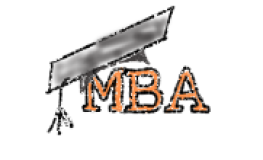 A few years back I finished an MBA. I didn’t set out to do one but thats where I ended up. There are wild MBA evangelists out there (‘it will change your life’) and the detractors (‘over hyped, you can learn this stuff from a book’) so this is my story.
A few years back I finished an MBA. I didn’t set out to do one but thats where I ended up. There are wild MBA evangelists out there (‘it will change your life’) and the detractors (‘over hyped, you can learn this stuff from a book’) so this is my story.
Establishing an intrapreneurial enterprise within a university almost a decade ago, on the back of a decade of working with industry, I had realised clients generally trusted me on the science, but something else was driving decisions and processes. More often than not the go-no-go decisions were out of my hands and made on something else e.g. market size, profitability, budget cycles or sometimes political issues. I read ( and still do) a lot of business books to try an get my head in the game, they were extremely useful but they only got me so far. Belonging (and being a board member) of some industry associations put me in a lot more regular contact with business speak, bootcamps ( just quietly…I’ve done a few to many of those), decision making and accelerated time frames (compared to glacial academic ones anyway), pretty soon I realised I need to take a plunge into something a bit more rigorous.
A Graduate Certificate in Business Administration was a great start, covering many of the basics including marketing, where I surprised myself by topping the class, HR because after all at least 50% of what I do was working with people… it just made sense. Probably the greatest single influence there was the first introductory subject where I did my first ever scenario analysis and projection on what I had being doing in my research lab for the last 10 years. It was like a lightbulb went off, suddenly I had a crystal ball into the future. It was a nice tool to compliment my intellectual curiosity lay and to balance the pull of the next pay check, both of whichhad been unconsciously positioning my work.
The successes were almost immediate for the bottom line. By riding trends (instead of fighting or trying to create them), consciously pursuing operational efficiency with technology tools and adopting internal lab standards everything became just that bit easier. It also gave me something more interesting to say at industry conferences than my latest algorithms
Dial forward a few years and the tension of trying to be nimble in a large sluggish organisation, where sometimes I completed a ‘gig’ faster than an invoice could be issued ( and by faster it was only a few months of work) I decided to study up on entrepreneurship and innovation, (which turned out to be more than Malcom Turnbull’s latest buzz words).
Sadly my time at the helm of the entrepreneurial unit came to a close not long after, it had become mainstream enough that it was swallowed back into the loving arms of the tenured. So I took the opportunity to finish up a few more interesting subjects, in particular Strategy (which nicely complimented the first subject I started with) and a smattering of finance and accounting. Just for fun, in a project I looked into the growth of online tertiary education, eerily the case organisation I chose ended up just a year later confirming most the findings (yet unable to steer itself enough to take advantage of them)…how cool!!
Anyways thats my MBA story, thanks to Griffith, Stanford and Sunshine Coast universities I entered the wilderness of the gig economy better prepared than what one might expect from a yesteryear Physics PhD. For me an MBA hasn’t been a silver bullet, but rather a partner on the journey. Its been a gateway to new skills, surviving uncertainty and learning to enjoy the ride. I’m continuing to do research, consultancy with industry, with a side order of online teaching and working within some growing SME’s whilst raising a family too!
You can pay big bucks (or not so much) for an MBA, but thats something for another post …

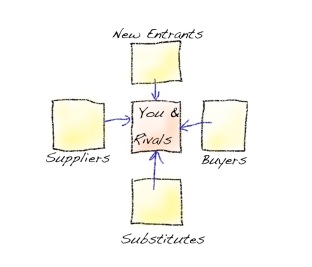 Where ever you are in your business chances are you want to make it a grow a bit or a least make it a bit easier on yourself in the trenches. This is where Porters fives competitive forces can come in really handy. Just by asking yourself these 5 simple questions you can get a better idea of your competitive landscape no matter what kind of business you are running.
Where ever you are in your business chances are you want to make it a grow a bit or a least make it a bit easier on yourself in the trenches. This is where Porters fives competitive forces can come in really handy. Just by asking yourself these 5 simple questions you can get a better idea of your competitive landscape no matter what kind of business you are running.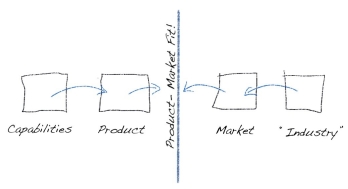 I still do quite a bit of work in the university sector. (I guess you get that when you come from a research background). Universities are full of amazing and very capable people with great ideas. These ideas are often well tested in the laboratory too!
I still do quite a bit of work in the university sector. (I guess you get that when you come from a research background). Universities are full of amazing and very capable people with great ideas. These ideas are often well tested in the laboratory too!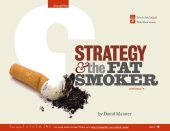 There is a great strategy book about a fat smoke (Strategy and the Fat Smoker” by D. Maister). You can read the whole book if you like but the Itty Bitty take on it is this: The fat smoker knows he has to give up the cigars, the booze and start exercising to lose some weight…but nothing actually happens until the heart attack. Then and only then does he take action and do something about it. Then once the crisis is over its probably not long till he’s back on the booze and the fags.
There is a great strategy book about a fat smoke (Strategy and the Fat Smoker” by D. Maister). You can read the whole book if you like but the Itty Bitty take on it is this: The fat smoker knows he has to give up the cigars, the booze and start exercising to lose some weight…but nothing actually happens until the heart attack. Then and only then does he take action and do something about it. Then once the crisis is over its probably not long till he’s back on the booze and the fags.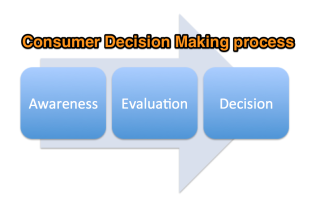 It takes a long time for a prospect to actually make the decision to buy a product or service. There are several processes they go through, and at each step there is a funnelling, or more correctly a loss, of prospects. This is called the consumer decision making process. If you understand your customer you can help them through each of these stages by embedding information and values that will aid a successful conversion.
It takes a long time for a prospect to actually make the decision to buy a product or service. There are several processes they go through, and at each step there is a funnelling, or more correctly a loss, of prospects. This is called the consumer decision making process. If you understand your customer you can help them through each of these stages by embedding information and values that will aid a successful conversion.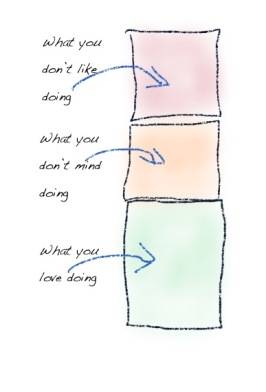 It’s an attractive idea isn’t it?, take something you really enjoy doing and turn it into your career. The trouble is a dream turned into reality can sometime become a nightmare. Somewhere in the process it could also takes away the very thing you love,
It’s an attractive idea isn’t it?, take something you really enjoy doing and turn it into your career. The trouble is a dream turned into reality can sometime become a nightmare. Somewhere in the process it could also takes away the very thing you love,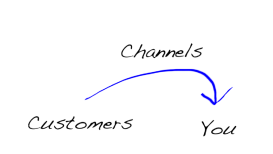 There are only 3 things you need to succeed in business.
There are only 3 things you need to succeed in business.